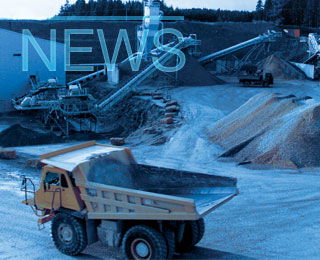The start of 2025 has not begun well for Nepal's cement industry. A total of 13 cement plants in Koshi state have been forced to shut down temporarily as they are unable to meet the high cost of imported clinker, while domestic sources are under the control of the larger players.
Despite these developments, the government has decided not to step in as 21 cement factories in the country are able to produce clinker and are deemed capable of meeting current cement demand needs. The Global Cement Report – 15th Edition estimates that domestic cement consumption in Nepal reached ~8Mta in 2024 and oversupply is now putting pressure on the smaller cement producers.
In geographical terms, the domestic market is concentrated in large cities along the east and west highways between Kathmandu and Pokhara. Cement types produced in the market include 50 per cent pozzolan cement, 40 per cent OPC and 10 per cent slag cement. Prior to 2017-18, Nepal imported half of its annual requirements of finished cement and clinker from India. But this is changing with the larger integrated plants controlling more of the domestic market. Coal, gypsum and iron ore also need to be imported for cement manufacture, which means grinding plants have tended to be more sustainable than integrated plants for the local industry to run. Now the lnkes of Hongshi-Shivam Cement and CG Cement Industries have the capacity to supply half of the domestic annual cement requirements.
However, plants are under continued threat of closure and shutdowns are beginning to mount up. There are four plants on the point of shutting down production in Morang, eight in Jhapa, one in Sunsari, one in Udayapur and one in Dhankuta in Kushi province, according to local sources. In addition, the remaining plants in Jhapa are operating at about 25 per cent of capacity utilisation, claims The Rising Nepal Daily.
The high price of imported clinker and the government’s inability to spend capital, the non-payment of loans and the stoppage of exports have combined to put many plants on the brink of closure. According to the Nepal Manufacturing Association (NMA), the industry consisted of 65 cement plants, comprising 42 grinding units and 23 integrated plants in 2023. The largest plant is the Chinese-owned Hongshi-Shivam Cement plant which has a capacity of 2.44Mta.
India BIS implementation
Adding further woe to the situation is a challenging Indian export market. Trade with India was made more difficult by restrictive measures being imposed on Nepali goods, which were not permitted to include any Chinese components. Nepal’s exporters have had difficulty in obtaining Bureau of India Standards (BIS) certificates as Indian officials have been slow to visit factories in Nepal despite paperwork having been completed by exporters. The new certificates are designed to prevent Chinese goods from entering India with restrictions imposed on 370 Chinese products, across many industries. Arghakhanchi Cement, Sarbottam Cement, Palpa Cement and Balaji Cement have all stopped exporting cement to India since November 2024, reports the Kathmandu Post.
“Even as the domestic consumption of cement declined, production was not impacted due to the huge demand from India. But now cement plants in Rupandehi are on the verge of shutting down or running under-capacity,” said Thakur Kumar Shrestha, president of the Siddhartha Chamber of Commerce and Industry.
Calls to ease the BIS restrictions for Nepalese goods have gone unheeded. According to the NMA, a dozen Nepali cement plants applied for BIS certification in 2022 to make their products eligible for export, particularly to India. However, none of these plants have been able to complete the registration process. This is despite paying fees for BIS certification and completing laboratory tests on their products.
In addition, India’s Commerce Minister, Piyush Goyal, insists that the quality control orders (QCOs) have been extended to 732 products to align with international standards and boost exports. “QCOs are a key mechanism through which India is not only raising quality standards to enter the global value chain but also restricting imports from China,” Goyal stated. “Imports from China have already crossed US$60bn during the first seven months of 2024, which is 10 per cent higher than the US$55bn recorded in the same period last year [2023].”
Summary
Nepal's cement producers have seen increasing plant closures due to a lack of domestic clinker, while the cost of imported clinker has become unaffordable. In addition, export opportunities of recent years have melted away as Nepali producers have been caught in the trade restrictions imposed by India on Chinese goods. Therefore, plant closures look likely to continue as the grinding operators are forced out of the market in favour of those with domestic clinker supply.
